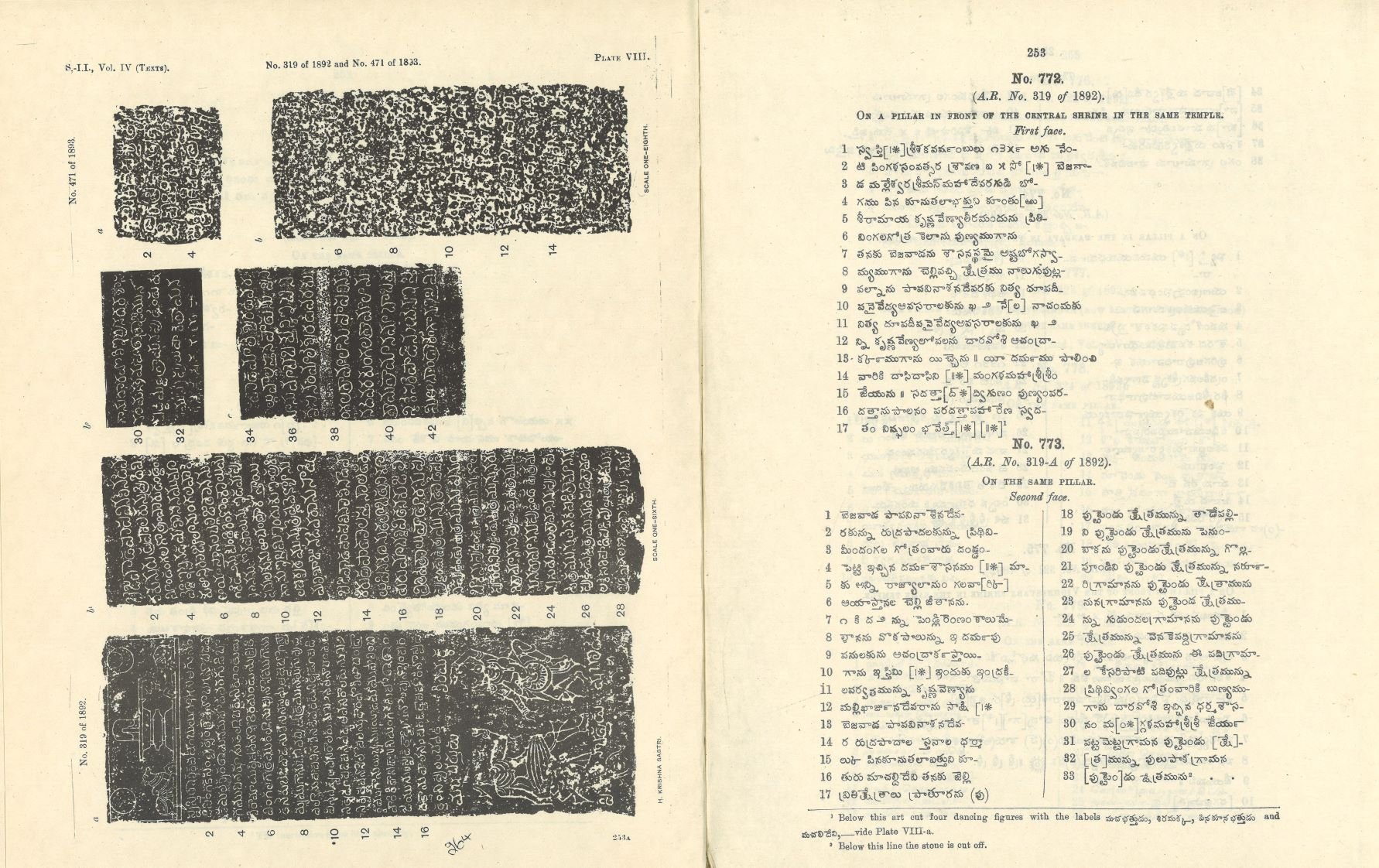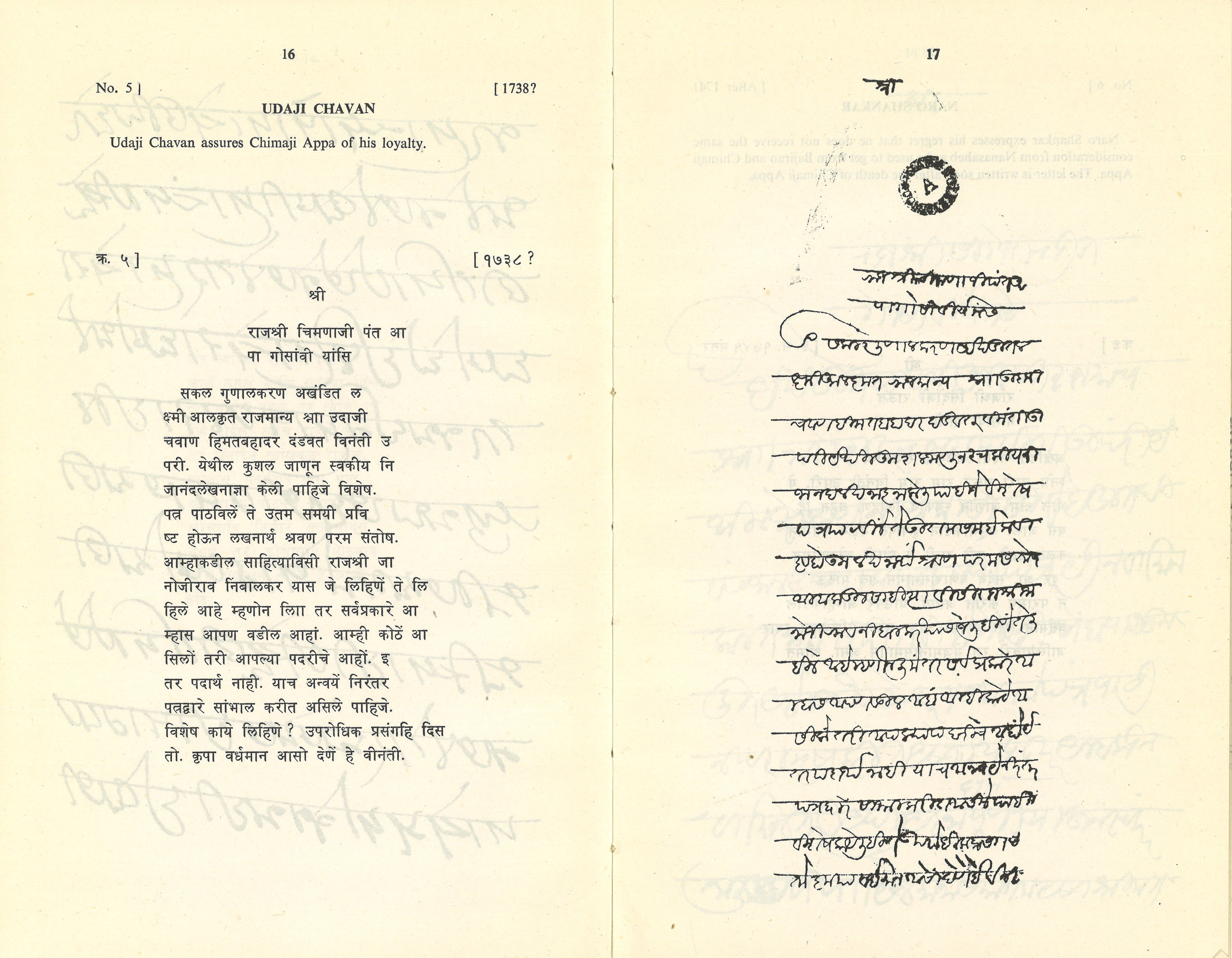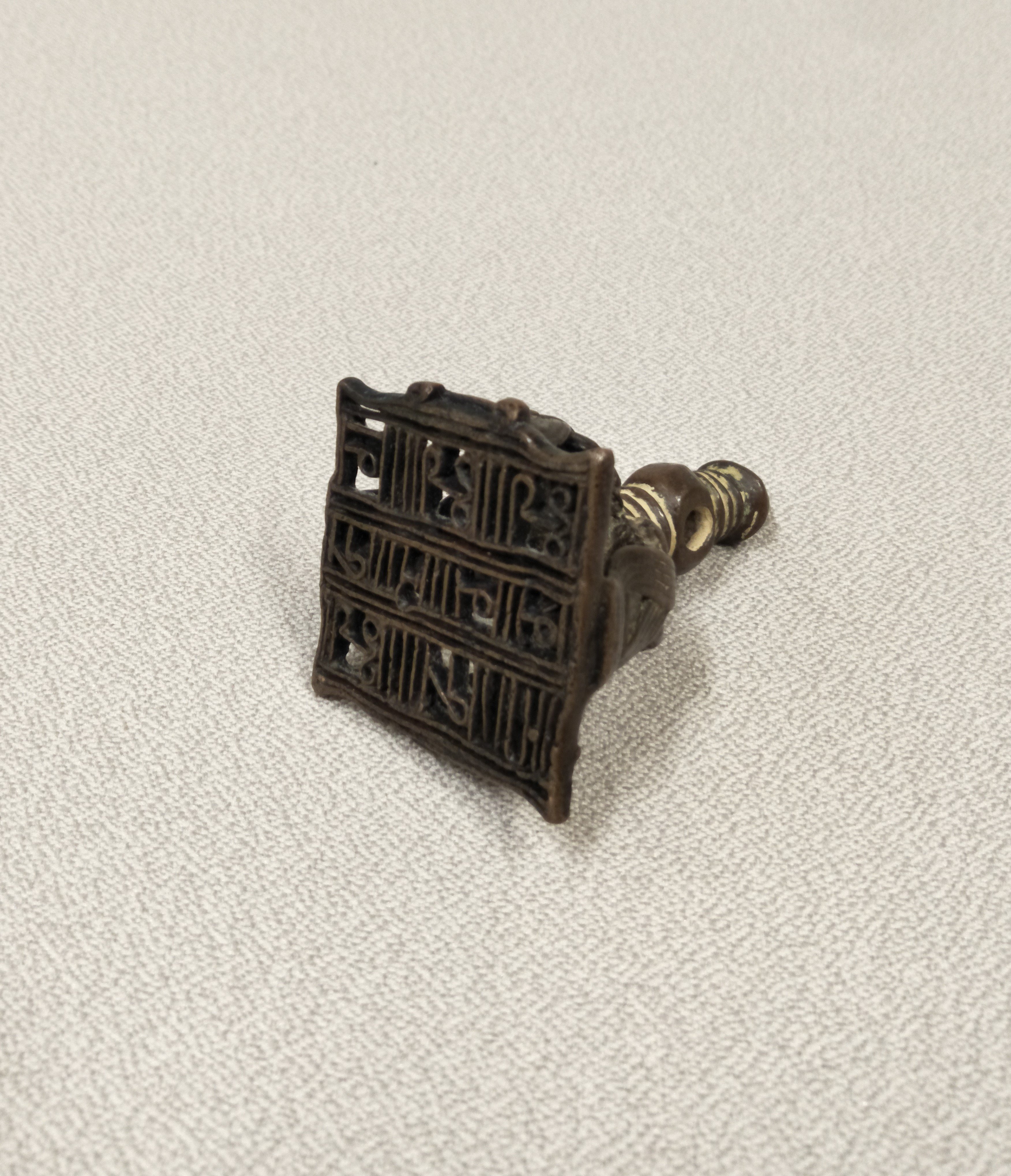Stones, Papers, and Bodies
Madras: Government Press. 1923
The Archaeological Survey of India publishes its South Indian Inscriptions from 1890 through the present. The series currently runs to 34 volumes. Here selected is vol.4, Miscellaneous Inscriptions in Tamil, Telugu and Kannada, published in 1923 (reprinted in 1986). The page on the left reproduces the rubbings of a pillar in front of the central shrine of the Malleswara Temple in Bezwada (now spelled as Vijayawada) in current-day Andhra Pradesh. Besides the inscribed text, the pillar also shows the figures of the sun and the moon, a linga, and two seated bulls on the tops and four dancing figures at the bottom. The transcription of the inscription is given in the page on the right.
Epigraphy is one of the major sources for South Asian history, especially before the early modern period. Stone pillars, metal plates, clay seals, and sometimes ivory and glass have all been used as materials for inscription. According to D. C. Sircar’s estimation, more than 90,000 such inscriptions have so far been discovered in all parts of India. The bulk of surviving inscriptions come from medieval south India and are written in the Dravidian languages with southern Brahmic scripts. Wars, temple patronage, and the building of water tanks are among the common themes of these inscriptions. For the medieval period of South Asian history, these inscriptions have furnished a large amount of information not recorded in manuscript sources and have been especially useful for establishing chronologies.
Bombay: Government Central Press, 1978
This volume reproduces 17 Marathi archival documents written in Modi script between the 17th and the early 19th century. This period witnessed the rise and fall of Maratha power in the subcontinent. The splendid archive of the Peshwa, the de facto head of the Maratha chiefs, has fortunately survived and is now preserved at the Maharashtra State Archives. The numbers of paper documents in this archive attest to the fact that the Mughal Empire was not the only kāghazī rāja (paper rule) in early modern South Asia.
Scholars of South Asian manuscript culture have recently started to emphasize the diverse material forms of manuscripts and the social, symbolic significance associated with them. In this context, it is interesting to consider the history of Modi. Bearing much resemblance to Devanagari, Modi is a cursive script widely used for recording administrative and commercial transactions in western India. As the Balbodh (lit. children-understandable) variant of Devanagari is favored as the standard, more legible script for writing and printing Marathi texts in the 19th century, Modi has since then become less visible in the public sphere. The precolonial Marathi documents included in the vast Selections from the Peshwa Daftar published since 1930, for example, are transcribed from the original Modi and printed in Devanagari.
Cast brass; date unclear
This stamp is meant to be used by devotees to stamp their bodies. The inscriptions read śrī śrī nama [namo] nārāyaṇāya śrī (salutations to the gracious Nārāyaṇa). Śrī essentially means grace, prosperity, and is ubiquitously used in South Asia to express the veneration for deities. Nārāyaṇa is one of the many names of Vishnu.
The followers of many Hindu sects, like the Gaudiya Vaishnavism founded by Caitanya, would inscribe the name of God onto certain parts of their bodies, such as forehead, arms, and stomach. They do so by applying a paste, often made from sandalwood and water, to a stamp and stamp it onto their skin. It is believed that the name by itself bears auspicious power. The practice thus recalls the oral chanting of God’s names and the writing of these names towards the end of manuscripts. Besides names written in letters, symbols of God, such as disc and club, are also sometimes used.


